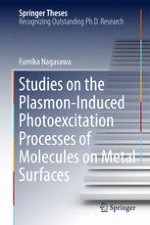This thesis proposes a novel way to catch light energy using an ultrasmall nanostructure. The author has developed photon-materials systems to open the way for novel photoexcitation processes based on the findings obtained from in-situ observation of the systems in which localized surface plasmon (LSP) and molecules interact strongly. The highly ordered metal nanostructure provided the opportunity for anisotropic photoexcitation of materials in an eccentric way. The optimization of the systems via nanostructuring and electrochemical potential control resulted in the novel excitation process using LSP to realize the additional transition for photoexcitation. Furthermore, excited electronic states formed the strong coupling between LSP and excitons of molecules. This thesis will provide readers with an idea for achieving very effective processes for photon absorption, scattering, and emission beyond the present limits of photodevices.
